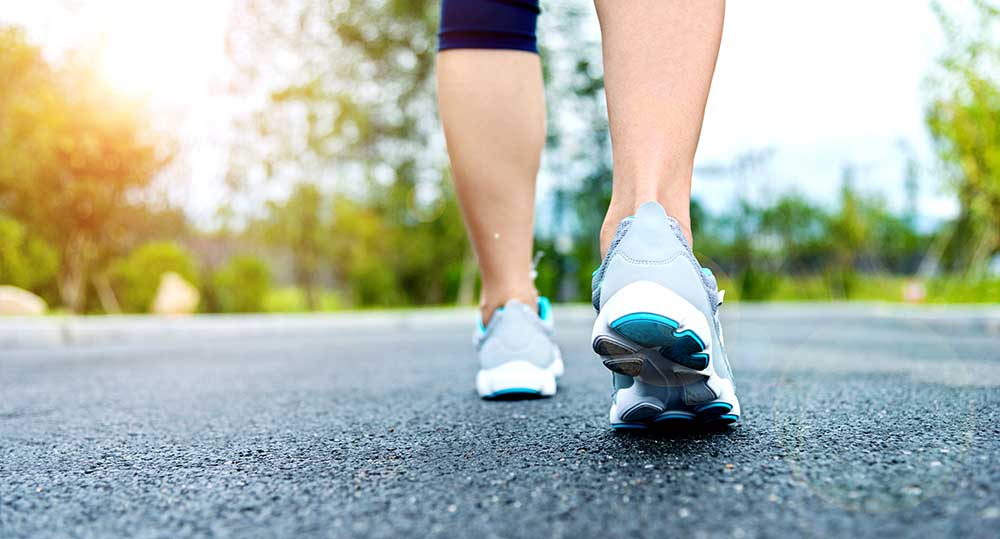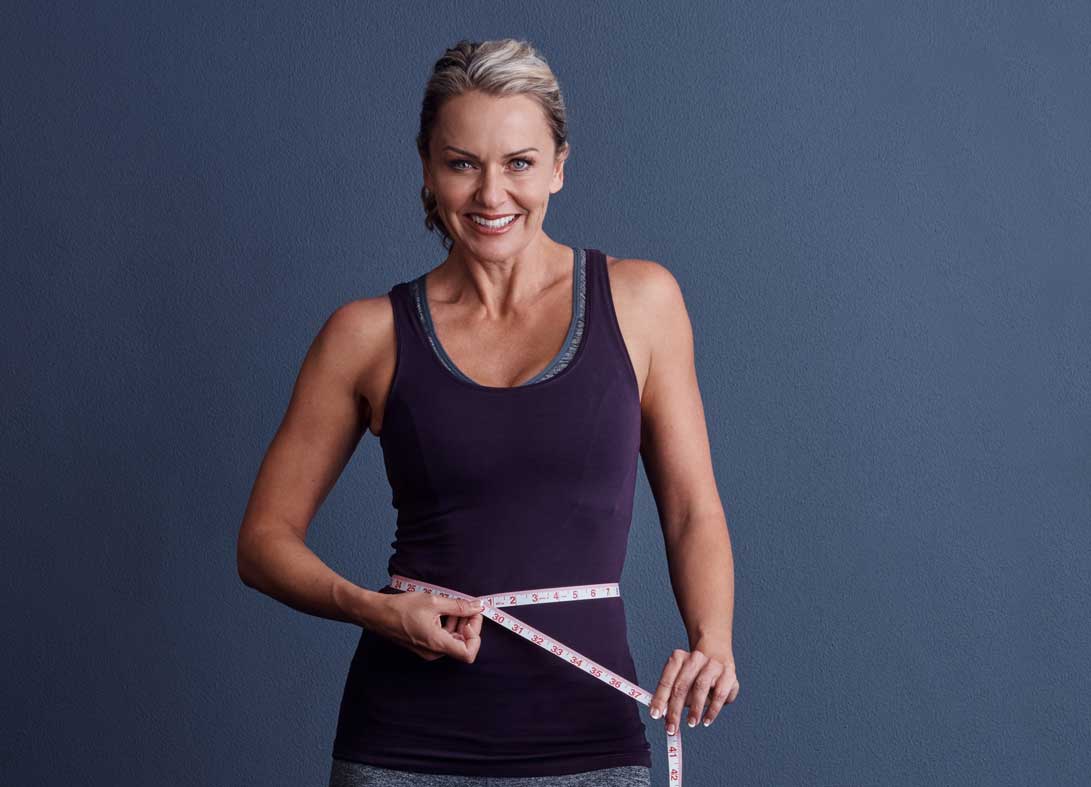Whether you’re on a get-fit mission or just wanting to maintain good health through regular exercise, walking is a great option that couldn’t be easier to embrace. More than a dawdle but not quite a jog, a good brisk walk can do wonders for our mental and physical health, as exercise physiologist Sonia Glanville explains.
Walking improves circulation
Walking is great for circulation as it helps to oxygenate our blood and boosts blood flow by enlarging blood vessels. It also helps prevent deep vein thrombosis by using the deeper calf muscle, which assists blood flow back to the heart.
Walking makes breathing easier
Walking increases your breathing rate and strengthens your respiratory muscles. “Walking is beneficial for those with asthma and COPD (chronic obstructive pulmonary disease) as long as you walk indoors on high pollution days,” says Sonia.
Walking makes your heart healthier
Walking is one of the easiest ways to protect your heart. Studies have found that brisk walking is as good as running for lowering cholesterol, blood pressure and diabetes risk – the three key factors in the development of heart disease.
Walking gives your creativity a boost
There’s a reason some companies hold walk ‘n’ talk meetings. US researchers examined the creativity levels of people while they walked versus while they sat and found the walkers increased creative output by 60 per cent. The results were the same whether the participants walked indoors on a treadmill or outdoors in nature.
Stress levels fall when you walk
Try walking daily for 30 minutes in a ‘green’ environment such as a park for eight weeks. Research shows you’ll sleep better and lower high blood pressure and stress levels. “Walking helps decrease the levels of the stress hormone cortisol,” says Sonia.
Your mmunity is strengthened when you walk
Just 20 to 30 minutes of walking each day makes you 30 per cent less likely to pick up respiratory infections such as the common cold, say UK researchers. It’s thought that walking helps the body flush bacteria out of the lungs and airways, which reduces the chance of getting airborne illnesses. Walking also causes white blood cells (the body’s disease fighters) to circulate more rapidly and detect illness earlier.

How fast do I need to walk to reap the benefits?
Walking briskly is a wellbeing staple, but there can be some confusion around what qualifies as ‘brisk’. Previous guidelines have said a brisk walk should increase our heart rate to around 70 per cent of its maximum, or a pace at which you can talk but not sing – though both definitions are hard to measure.
Thankfully a review of 38 recent, high quality studies has a new definition: A brisk walk requires around 100 steps per minute. Study author Catherine Tudor-Locke from the University of Massachusetts says this is a pace that “will probably not feel strenuous to most healthy people”. Simply count how many steps you take in 10 seconds and multiply by six, or count how many steps you take in a single minute and skip the maths altogether.

How to get the most out of walking
Posture: Stand up straight, pelvis slightly tilted forward, knees soft, shoulders relaxed and eyes and chin forward. Bend your elbows to 90 degrees and keep them close to the body. Keep hands relaxed.
Take a step: Strike the ground first with your heel. Roll through the step from heel to toe. Push off with your toe.
Striding out: Avoid taking big strides, which can place too much load on your back. Instead, take comfortable, smaller steps. With each step, the arm opposite your forward foot comes straight forward and then back.
Stretch: After walking, stretch your lower back and legs, focusing on quads and calves, to avoid tight muscles.

Walking for weight loss
M any people believe a good stroll still falls short of being a weight-loss tool, but with the right approach it can be. If you get serious about your stride and add on a few extra moves, you can turn it into a fat-burning exercise too. The secret, says strength and conditioning coach Travis Ronaldson, is to “look for ways to increase the difficulty of your walk and crank up your metabolism”.
One way to do this is interval training, which research shows can produce bigger weight-loss results than the same amount of training at a steady pace. “As you’re walking, stop and do a bodyweight exercise every five to 10 minutes – for example, 10 squats,” says Travis.”This will keep your heart rate elevated throughout your walk, increasing the overall kilojoules burned.”
Sixty minutes of walking a day is the magic number if you’re looking to slim down. “Remember, you don’t have to do your walking all at once,” explains Travis.
“If you’re pressed for time, walking for 10 minutes, six times a day, is just as good as going for a 60-minute walk. If an hour isn’t possible, 30 minutes every day has also been shown to benefit general health, weight loss, heart health and mental wellbeing.”
If you haven’t exercised regularly, then go slow. “Start off by walking three times a week, and increase from there, aiming to walk daily,” tells Travis. “The more days you walk, the more activity you’re completing, which in turn will assist with further weight loss.”

If all of your walking happens on a treadmill, you’ll need to make some adjustments. “Walking on the treadmill can be just as effective for weight loss as going for a walk outdoors – but you need to use the functions such as incline and speed,” explains Travis.
“The trap people fall into on the treadmill is walking so slowly that they’re not challenging their body at all. Up your pace and walk faster than you would on the pavement and set your incline to at least one per cent, throwing in ‘hills’ regularly.”
Naturally, the faster you walk, the more kilojoules you’ll burn. “If you can still talk, but are a little out of breath, you are walking at a great speed to maximise weight-loss potential,” reveals Travis.
“Other cardio activities like running, swimming and fitness classes take all the glory for weight loss, but don’t forget that vigorous walking for 30 minutes can burn upwards of 500kJ,” he says. “Brisk walking also puts many people in the target fat-burning zone – when you are at 60 to 70 per cent of your maximum heart rate – making it an integral part of all weight-loss programs.”
Walking uphill increases the amount of kilojoules you burn by up to 60 per cent, compared to walking on flat ground. “Changing your regular walking route to include hills immediately boosts the intensity of your walk,” says Travis.
“Go off-road and hike a steeper incline or take the stairs at work.” Invest in a heart-rate monitor to check you’re not in cruise mode.
“Getting your heart rate up above 120bpm (beats per minute) will stimulate rapid kilojoule burning. You could also switch the surface to challenge your muscles – try sand, dirt tracks or grass.”
For more health stories, pick up a copy of the latest Good Health & Wellbeing magazine.


